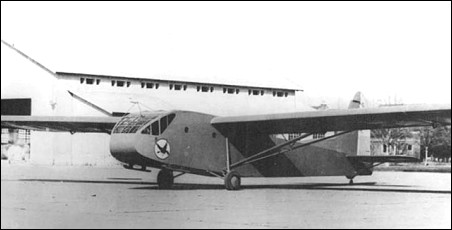| Dr. Ricardo Caballero, e-mail, 19.01.2022 01:12 At the end of 1944, the General Directorate of Aeronautics of Argentina requested the Aerotechnical Institute (I.Ae.) to develop an assault glider, intended for transporting troops and logistics. The assault glider should be able to be manufactured by an “unskilled labour force” using wood from the country’s forests since Argentina was limited at the time by the scarcity of strategic raw materials. The idea for an assault glider meant that the aircraft would be towed in flight (normally at night) by a twin engine transport or bomber aircraft to the vicinity of the target, where it would detach from its towing aircraft. The pilot was then to plan a short distance surprise landing on unprepared open ground, ideally next to the target or a pre-designated zone. It was common for a glider of this sort to be damaged or destroyed in such assault conditions, so it was conceived as a disposable transport. The need for an assault glider was part of the strategic forces of Argentina in the event of war and the need for rapid deployment.
The Aerotechnical Institute started a design that was known as I.Ae.25. It was a high-wing monoplane, made of wood, with features very similar to the North American GC-44 Waco with slight differences in terms of layout and glazed surface. It was nicknamed "Mañque" ("Vulture") and was painted in an overall top olive green and light blue-grey on the bottom.
The Argentine flag was painted on the rudder. As a coat of arms, a vulture in flight was drawn on the side of the cabin. The aircraft could carry a crew of two pilots and 16 soldiers with full equipment, or a jeep-type utility vehicle or a Bofors 75mm cannon. The prototype was built at the FMA and was completed on August 11, 1945, making a single test flight. The only copy was delivered to the 13th Infantry Regiment. Like the Waco, the construction of the Mañque was Spartan with an airframe made of tubes, covered with araucaria, and veneers of guatambú. It had a simple cockpit with double cable controls that once the glider had landed and stopped, the cabin was lifted upwards to deploy the troops or the logistic materials.
IA-25 Mañque had a wingspan of 25.50 m, a length of 14.70 m and a height of 3.84 m; wing area of 79.1 m²; the empty weight was 2.46 tons, the payload 1,122 kg and a Maximum Takeoff Weight of 3,582 kg. The maximum towing speed was 220 km /h, with a minimum gliding speed of 61 km /h. reply |











